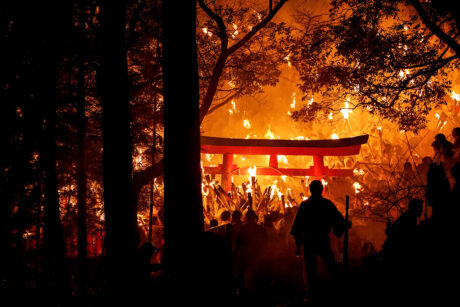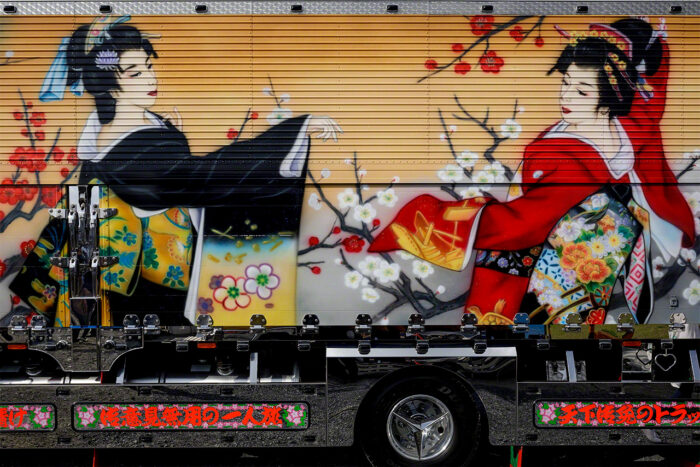I’m lucky. I’ve walked through this book many times before.
I’ve strolled through the backstreets of Shibuya on the way to work, past pastel-hued love hotels with fake ivy running up the façade to balustrades that look like they are made of icing sugar.
I’ve seen the dawn come up in Golden Gai, the souk of tiny ramshackle bars that stands as a living monument to the heyday of Japan’s counter-culture in the nineteen sixties and seventies.
My eyes have been blasted by ten thousand fizzing, scrolling invitations to hedonistic excess in the neon wonderland of Kabuki-cho, the largest pleasure district in the country that invented pleasure districts.
I’ve watched a man clutching a briefcase ascend an escalator in a deserted station, as isolated as a figure in a Edward Hopper painting. I have been that man.
That comes from my introduction to veteran photographer Hans Sautter’s magnificent tome, “Japan”. It’s a heavyweight offering in every sense of the word, and constitutes a summary of his life’s work as a professional photographer.
You can find it on Amazon.com, Amazon.co.jp and Amazon.co.uk, as well as in all respectable bookstores.
Hans arrived in Japan on a one way ticket in 1972, attracted by Shuji Terayama’s outrageous and surreal film, Throw Away Your Books, Rally in the Streets. While remaining intimately involved with Japan, he subsequently spent significant time in South East Asia and Australia, where he worked in construction, erecting high-rise steel girders.
In a recent Press Club event, Hans explained his photographic process, revealing the staggering amount of preparation behind each image, which is usually mapped out in his mind long before he arrives at the scene. He insisted on “no Kyoto” and has no captions on the page, though there is an index at the end. Some of the shots were taken in hazardous circumstances as the elements – fire, water and wind – raged.

Copyright: Hans Sautter
The book is organized into six themes, each introduced by an expert commentator and each broad enough to contain polar opposites.
Metropolis offers the structured calm of the Kyu Shiba Rikyu garden and also the pandemonium of the Shinjuku night-life. Within Nature, you see the twisted roots of a primeval forest in Yakushima and also a mountainside covered by an anti-landslide wall that looks like a huge concrete waffle.
Within Aesthetic, you can find austerely beautiful ceramic bowls, ten foot tall transformer robots, the chalky-white neck of a geisha, family crests that have been in use for the best part of a millennium and Hello Kitty, the mouthless feline icon that appears on all kinds of goods, from pencil cases to vibrators.
Costume is a way of telling stories about ourselves, which is a deep-seated human need; the fashion industry is based on it. Hans shows us Japanese people formatting their identity in ways that are light-hearted and deadly serious, as ephemeral as this year’s pop sensation and as long-lasting as Shinto myth.

Copyright: Hans Sautter
Rituals remind us that we are individuals but also social creatures linked to what came before us and what will come after. They are conducted in special places like temples and tea ceremony rooms, but are also part of the ordinary routines of life such as morning calisthenics and ceremonies at school sports days. The Sacred is there to balance the profane. We need them both.
From this stream of events, Hans Sautter has captured moments and patterns, people and objects and natural phenomena in a mosaic of images that will dwell in your mind long after you have put the book down.
